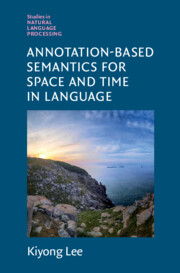Book contents
- Frontmatter
- Dedication
- Contents
- Foreword by James Pustejovsky
- Preface
- Acknowledgements
- Part I Fundamentals
- 1 What Is a Semantic Annotation?
- 2 Data Segmentation
- 3 Modeling a Semantic Annotation Scheme
- 4 Representation and Serialization
- 5 What Does Semantics Do for Annotation?
- 6 Annotation-Based Semantics
- Part II Time and Events
- Part III Motion, Space, and Time
- References
- Index
4 - Representation and Serialization
from Part I - Fundamentals
Published online by Cambridge University Press: 05 August 2023
- Frontmatter
- Dedication
- Contents
- Foreword by James Pustejovsky
- Preface
- Acknowledgements
- Part I Fundamentals
- 1 What Is a Semantic Annotation?
- 2 Data Segmentation
- 3 Modeling a Semantic Annotation Scheme
- 4 Representation and Serialization
- 5 What Does Semantics Do for Annotation?
- 6 Annotation-Based Semantics
- Part II Time and Events
- Part III Motion, Space, and Time
- References
- Index
Summary
This chapter introduces a concrete syntax. It is ideally isomorphic to an abstract syntax that specifies a semantic annotation scheme, while providing a format for representing annotation structures. This format can represent them either in a serialized way from left to right, or in graphic images or tabular forms with linking arrows. Representation formats may vary, depending on kinds of the use of annotation. Human readers, for instance, prefer tabular formats especially for illustrations or demonstrations. For the purposes of merging, comparing, or exchanging various types of annotations or different annotations of the same type, graphs are considered useful. In this chapter, I introduce a graphic annotation format, called GrAF, for linguistic annotation. For the construction of larger corpora, however, there are practical computing reasons to prefer a serialization of annotations. For the serialized representation of annotation structures, this chapter mainly discusses two formats: (i) XML and (ii) pFormat, a predicate-logic-like representation format, which represents annotation structures in a strictly serial (linear) manner by avoiding embedded structures.
Information
- Type
- Chapter
- Information
- Publisher: Cambridge University PressPrint publication year: 2023
